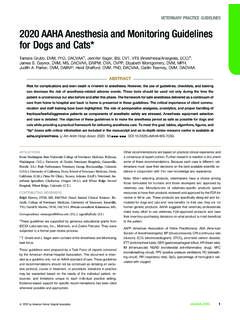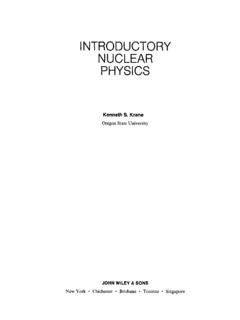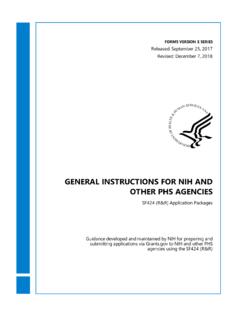Transcription of Industrial Energy Audit Guidebook: Guidelines for ...
1 LBNL-3991E. ERNEST ORLANDO LAWRENCE. BERKELEY NATIONAL LABORATORY. Industrial Energy Audit Guidebook: Guidelines for Conducting an Energy Audit in Industrial Facilities Ali Hasanbeigi, Lynn Price China Energy Group Energy Analysis Department Environmental Energy Technologies Division October 2010. This work was supported by the China Sustainable Energy Program of the Energy Foundation through the Department of Energy under Contract No. DE-AC02-05CH11231. The Government retains, and the publisher, by accepting the article for publication, acknowledges, that the Government retains a non-exclusive, paid-up, irrevocable, world-wide license to publish or reproduce the published form of this manuscript, or allow others to do so, for Government purposes. Disclaimer This document was prepared as an account of work sponsored by the United States Government.
2 While this document is believed to contain correct information, neither the United States Government nor any agency thereof, nor The Regents of the University of California, nor any of their employees, makes any warranty, express or implied, or assumes any legal responsibility for the accuracy, completeness, or usefulness of any information, apparatus, product, or process disclosed, or represents that its use would not infringe privately owned rights. Reference herein to any specific commercial product, process, or service by its trade name, trademark, manufacturer, or otherwise, does not necessarily constitute or imply its endorsement, recommendation, or favoring by the United States Government or any agency thereof, or The Regents of the University of California. The views and opinions of authors expressed herein do not necessarily state or reflect those of the United States Government or any agency thereof, or The Regents of the University of California.
3 Ernest Orlando Lawrence Berkeley National Laboratory is an equal opportunity employer. i Industrial Energy Audit Guidebook: Guidelines for Conducting an Energy Audit in Industrial Facilities Ali Hasanbeigi, Lynn Price China Energy Group Energy Analysis Department Environmental Energy Technologies Division Abstract Various studies in different countries have shown that significant Energy -efficiency improvement opportunities exist in the Industrial sector, many of which are cost-effective. These Energy -efficiency options include both cross-cutting as well as sector-specific measures. However, Industrial plants are not always aware of Energy -efficiency improvement potentials. Conducting an Energy Audit is one of the first steps in identifying these potentials. Even so, many plants do not have the capacity to conduct an effective Energy Audit .
4 In some countries, government policies and programs aim to assist industry to improve competitiveness through increased Energy efficiency. However, usually only limited technical and financial resources for improving Energy efficiency are available, especially for small and medium-sized enterprises. Information on Energy auditing and practices should, therefore, be prepared and disseminated to Industrial plants. This guidebook provides Guidelines for Energy auditors regarding the key elements for preparing for an Energy Audit , conducting an inventory and measuring Energy use, analyzing Energy bills, benchmarking, analyzing Energy use patterns, identifying Energy -efficiency opportunities, conducting cost-benefit analysis, preparing Energy Audit reports, and undertaking post- Audit activities. The purpose of this guidebook is to assist Energy auditors and engineers in the plant to conduct a well-structured and effective Energy Audit .
5 Ii Table of Contents 1. Introduction to Industrial Energy auditing .. 1. Definition of Energy auditing .. 2. Objectives .. 2. Types of Energy audits .. 2. Overview of Energy Audit procedures .. 3. 2. preparation for the Energy Audit .. 5. Defining the Audit criteria .. 5. Defining the Audit scope .. 5. Selection of Energy Audit 5. Making an Audit plan .. 6. Preparing an Audit 6. Conducting the initial walk-through 6. Collecting Energy bills and available data and information .. 7. Conducting the preliminary analysis .. 7. 3. Analyzing Energy 9. Electricity bills .. 9. Natural gas bills .. 10. Coal and fuel oil bills .. 10. Graphical analysis of historical Energy use .. 11. 4. Inventory and measurement of Energy use .. 13. Electrical load inventory .. 13. Thermal Energy use inventory .. 13. Energy system-specific measurements.
6 14. Energy balance .. 15. 5. Analyzing Energy use and production patterns .. 16. Load/Demand profile .. 16. Scatter diagram for presenting the dynamics of the Energy -production relationship .. 18. Interpretation of Energy -production data pattern on a scatter diagram .. 19. 6. Benchmarking and comparative Energy performance analysis .. 21. 7. Identifying Energy efficiency and Energy cost reduction opportunities .. 23. iii Electrical demand control .. 23. Cross-cutting Energy -efficiency improvement options .. 24. Energy -efficiency improvement opportunities in electric 24. Energy -efficiency improvement opportunities in compressed air systems .. 27. Energy -efficiency improvement opportunities in pumping systems .. 30. Energy -efficiency improvement opportunities in fan systems .. 34. Energy -efficiency improvement opportunities in lighting system.
7 35. Energy -efficiency improvement opportunities in steam systems .. 37. Energy -efficiency improvement opportunities in process heating systems .. 42. Sector-specific Energy -efficiency improvement opportunities for selected Industrial sectors .. 43. 8. Cost-benefit analysis of Energy -efficiency opportunities .. 45. Life-cycle cost analysis (LCCA).. 45. Life cycle cost (LCC) method .. 45. Net present value (NPV) 48. Internal rate of return (IRR) method .. 49. Simple payback period (SPP) method .. 50. 9. Preparing an Energy Audit report .. 51. 10. Post- Audit 53. Create an action plan for the implementation of Energy -efficiency measures .. 53. Implement the action plan .. 54. 56. Acronyms .. 57. References .. 58. 66. Appendix 1. Conversion factors .. 66. Appendix 2. Energy Audit instruments .. 67. Safety considerations.
8 67. Measuring electrical 67. Temperature measurement .. 68. Flow measurements .. 69. Exhaust gas measurements .. 69. Measurement of the speed of rotating equipment .. 70. Appendix 3. List of sector-specific Energy -efficiency improvement opportunities for selected Industrial 71. Cement industry .. 71. iv Iron and steel industry .. 73. Textile 76. Petrochemical industry .. 82. Glass industry .. 83. Vehicle assembly industry .. 84. Fruit and vegetable processing industry .. 85. v Industrial Energy Audit Guidebook: Guidelines for Conducting an Energy Audit in Industrial Facilities Ali Hasanbeigi, Lynn Price China Energy Group, Energy Analysis Department Environmental Energy Technologies Division Lawrence Berkeley National Laboratory Energy audits assist Industrial companies or facilities in understanding how they use Energy and help to identify the areas where waste occurs and where opportunities for improvement exist.
9 This guidebook provides step-by-step Guidelines that can be easily followed even by those who have not previously conducted Energy audits. These Guidelines are developed in a manner that can be used by both in-house auditors who are auditing their own plant and outside consultants who are hired to do an Energy Audit . The Canadian Industry Program for Energy Conservation (CIPEC) has published a guidebook titled Energy Efficiency Planning and Management Guide (CIPEC 2002) which presents a comprehensive discussion of the procedures for conducting an Industrial Energy Audit . CIPEC. also has a more recent guidebook specifically for Energy auditing called the Energy Savings Toolbox an Energy Audit Manual and Tool (CIPEC 2009). These two CIPEC guidebooks are two of the main references for Sections 1. to 4 of the Guidelines presented here.
10 Also, American Society of Mechanical Engineers (ASME) has published Energy assessment standards that cover the assessment of pumping, compressed air, steam, and process heating systems. In these standards the step-by-step procedure for measurement and assessment of these systems are presented which are key component of any Energy Audit practice and are highly recommended to Energy auditors and mangers (ASME, 2009a,b,c, 2010). 1. Introduction to Industrial Energy auditing An Energy Audit is a key to assessing the Energy performance of an Industrial plant and for developing an Energy management program. The typical steps of an Energy Audit are: preparation and planning data collection and review plant surveys and system measurements observation and review of operating practices data documentation and analysis reporting of the results and recommendations These steps are explained in more disaggregated format and detail in the next sections of this chapter.





